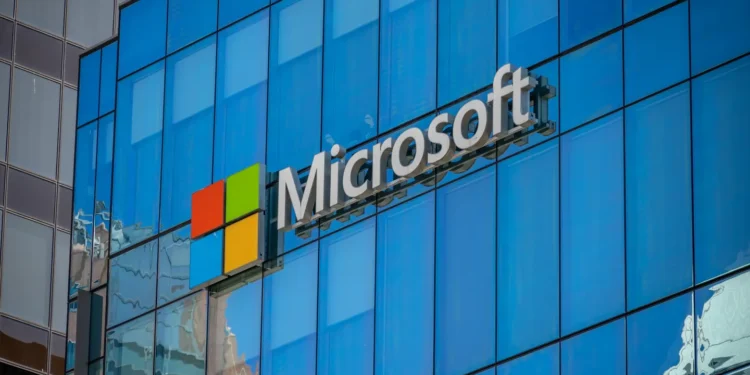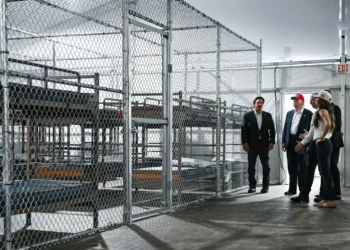Microsoft Layoffs Impact 7,000 Workers As Company Pivots to AI Investment
Microsoft announced a significant workforce reduction this week, cutting approximately 7,000 jobs globally. This represents about 3% of the company’s total workforce as it realigns resources toward artificial intelligence initiatives. The tech giant clarified these cuts aren’t performance-related but rather part of a strategic restructuring to “reduce management layers” and optimize operations for future growth.

Microsoft’s headquarters in Redmond, Washington, where 1,985 local employees will be affected by the layoffs.
Scale and Scope of Microsoft Layoffs
The current round of layoffs represents Microsoft’s largest workforce reduction since 2023, when the company eliminated 10,000 positions. According to company statements, the cuts will affect employees across all levels, teams, and geographies, with Washington state bearing a significant portion of the impact.

Key Numbers
- 7,000 employees affected globally (3% of workforce)
- 1,985 jobs eliminated in Washington state
- 1,510 office-based and 475 remote workers impacted
- Effective date: July 12, 2025
- Microsoft employed 228,000 people worldwide as of June 2024
The Washington State Employment Security Department received Microsoft’s WARN (Worker Adjustment and Retraining Notification) filing, detailing the 1,985 positions being eliminated in the company’s home state. This represents a significant portion of Microsoft’s approximately 54,000 Seattle-area employees.
“We continue to implement organizational changes necessary to best position the company for success in a dynamic marketplace,” a Microsoft spokesperson said in an official statement.
Strategic Shift Toward AI Investment
Despite the layoffs, Microsoft recently reported strong financial performance with quarterly revenues of $70.07 billion and net income of $25.8 billion, exceeding Wall Street expectations. This apparent contradiction highlights the company’s strategic pivot rather than financial distress.

According to financial analysts, Microsoft’s restructuring aligns with its massive investments in artificial intelligence. The company plans to spend approximately $80 billion on AI-related initiatives in fiscal year 2025, necessitating resource reallocation from other areas.
Analyst Gil Luria suggests that Microsoft’s capital expenditures on AI infrastructure may require ongoing workforce adjustments: “We believe that every year Microsoft invests at the current levels, it would need to reduce headcount by at least 10,000 in order to make up for the higher depreciation levels due to their capital expenditures.”
Microsoft CFO Amy Hood indicated during the company’s third-quarter conference call that the restructuring aims to increase agility by “reducing layers with fewer managers” while maintaining the company’s focus on building high-performing teams.
Tech Industry Layoff Trends
Microsoft’s workforce reduction follows a broader pattern of tech industry adjustments in 2025. Several major technology companies have announced significant layoffs as they navigate changing market conditions, emerging technologies, and strategic pivots.
Recent Tech Industry Layoffs
- CrowdStrike: 5% workforce reduction announced last week
- Meta: Multiple rounds of layoffs throughout early 2025
- Various startups scaling back amid funding challenges
- AI-focused reorganizations across multiple tech giants

These workforce reductions reflect the tech industry’s ongoing evolution, particularly as companies redirect resources toward artificial intelligence and other emerging technologies. For Microsoft specifically, the layoffs appear to be part of a calculated strategy to optimize operations while doubling down on AI investments.

Impact on Employees and Communities
The layoffs will significantly impact thousands of Microsoft employees and their communities, particularly in the Seattle region where the company maintains its headquarters. With 1,985 positions eliminated in Washington state alone, local economic effects may be substantial.

For affected employees, Microsoft typically provides severance packages, though specific details of the current separation benefits haven’t been publicly disclosed. The company has historically offered outplacement services and career transition support during previous rounds of layoffs.
Resources for Affected Employees
- Severance packages based on tenure
- Extended healthcare benefits
- Career transition services
- Job placement assistance
Challenges Facing Laid-Off Workers
- Competitive tech job market
- Potential relocation needs
- Skill alignment with emerging technologies
- Psychological impact of job loss
Local tech industry observers note that while the Seattle area’s robust technology ecosystem may absorb many displaced workers, the scale of these layoffs presents challenges for the regional job market.
Market Reaction and Future Outlook
Wall Street’s response to Microsoft’s layoff announcement has been relatively measured. The company’s stock experienced a modest 1.5% decline following the news, but remains up approximately 7% year-to-date in 2025.

Investors appear to be balancing concerns about the layoffs against Microsoft’s strong financial performance and strategic AI investments. The company’s shares closed at $449.26 on Monday, near their highest price this year, though still below the record $467.56 reached in July 2024.
Looking ahead, analysts will be closely monitoring Microsoft’s execution of its AI strategy and whether the workforce reductions deliver the intended operational efficiencies. The company’s next earnings report will be particularly scrutinized for signs that this restructuring is yielding positive results.
What This Means for the Tech Industry
Microsoft’s layoffs reflect broader shifts in the technology landscape as companies reposition themselves for an AI-centric future. This strategic realignment—cutting traditional roles while investing heavily in artificial intelligence—may become increasingly common across the industry.
For technology professionals, these changes underscore the importance of developing AI-related skills and remaining adaptable in a rapidly evolving job market. For investors and industry observers, Microsoft’s moves provide valuable insights into how major tech companies are navigating the balance between operational efficiency and strategic investment.




















































